Queens of England: Inside the Historic Reigns of 8 Female British Monarchs
There have been only eight reigning queens in the history of the British monarchy
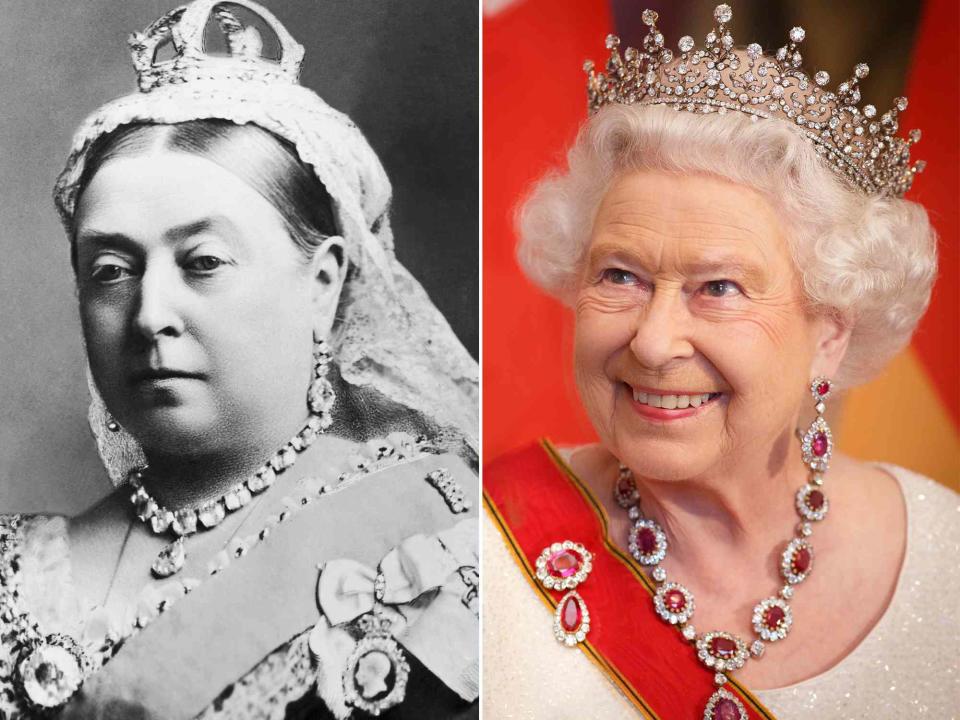
Britain has had a number of monarchs through the centuries, though notably far more kings than queens have truly ruled.
In fact, there have only been eight reigning queens of England, including Queen Elizabeth II, who died in September 2022.
A number of queens ascended to the role through their husbands, who were legitimate heirs to the throne. Of the women who became queens in their own right, only one — Queen Mary II — insisted on reigning alongside her husband as an equal. The seven other queens each ruled in their own way, whether for a handful of days, like Lady Jane Grey, or for several decades, such as Queen Elizabeth.
Following Queen Elizabeth's death in September 2022, her eldest son, King Charles, succeeded the throne. As a result, Charles' wife Camilla became Queen Consort, and the two will be coronated on May 6, 2023. (Queen Consort is the traditional title for the wife of a reigning monarch as Queen is reserved solely for female monarchs who assumed the position through the line of succession.)
From Empress Matilda's chaotic reign in the 12th century to Queen Elizabeth's steady 70-year rule, here is a look at the eight former queens of England.
Empress Matilda
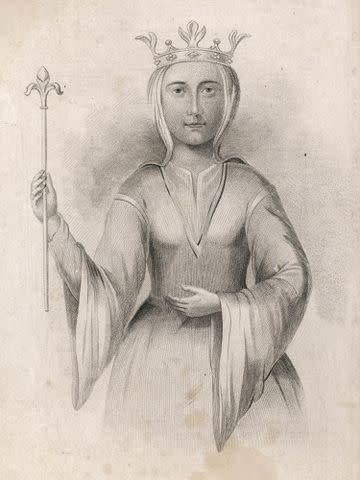
Empress Matilda, who was also known as Empress Maude, claimed the English throne during the chaotic civil war called the Anarchy. The war broke out between England and Normandy (now part of France) in 1138 and plunged the country into crisis until 1153.
Matilda was born to King Henry I and Matilda of Scotland around 1101 or 1102 in Berkshire, England. Henry had married her mother, the daughter of King Malcolm III of Scotland, in the hopes that it would raise his own status.
The 1991 book The Empress Matilda: Queen Consort, Queen Mother and Lady of the English by Marjorie Chibnall detailed much of the future empress's life. Matilda became betrothed to King Henry V of Germany (later Holy Roman Emperor) in the spring of 1110 when she was around 9 years old. In July 1110, she was crowned queen of Germany, and she legally married Henry V in 1114.
In 1120, Matilda's brother — William Adelin, the only legitimate heir to the English throne — died at sea, putting Henry I's hope for a dynasty at risk. According to Chibnall, Matilda's husband, Henry V of Germany, died in 1125, presumably of cancer. His death was the catalyst that Henry I needed to push for her ascension to the English throne; in 1127, 25-year-old Matilda became engaged to 13-year-old Geoffrey of Anjou, the son of a French nobleman. They married in 1128. While the marriage wasn't known to be a happy one, the pair had three children.
After Matilda and Geoffrey wed, Henry I was repeatedly assured by his council that Matilda would be his heir, though he may have reneged on his plans before his death. After he died in 1135, Matilda and Geoffrey of Anjou attempted to maintain control of the country but were stopped by Matilda's cousin, Stephen of Blois, who had the support of the Church of England for his own bid for the crown.
Matilda soon traveled to England to overtake her cousin and claim the throne as her own. Eventually, Matilda controlled part of the country and Stephen the other, and she left England to meet her husband in Normandy, France. Matilda and Geoffrey's son stayed in England and was later crowned King Henry II.
Lady Jane Grey
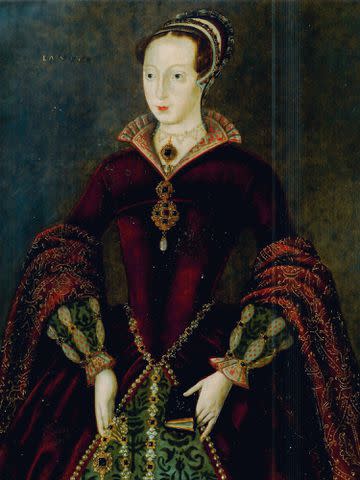
Lady Jane Grey was born in 1537, according to Historic Royal Palaces. Of all of England's reigning queens, Jane was monarch for the least amount of time — only nine days — despite being the great-granddaughter of King Henry VII. She married Lord Guildford Dudley and together they had three children.
Jane was named queen following the death of her cousin, King Edward VI. At the time of his death, Jane was fifth in line for the throne, but Edward VI personally chose her to succeed him because they were both Protestant. Jane was 16 when she was proclaimed queen of England, France and Ireland.
However, things took a dark turn for Jane within days; the monarchy's advisers decided that Edward VI's half-sister, Mary, should be queen. Jane was deposed on July 19, 1553, marking the end of her reign.
In January 1554, Jane's father became involved in Wyatt's Rebellion, an attempted uprising against Queen Mary I after she announced her intention to marry a foreigner. Found guilty of treason, Jane and her husband were imprisoned at the Tower of London and then beheaded on Feb. 12, 1554.
Queen Mary I
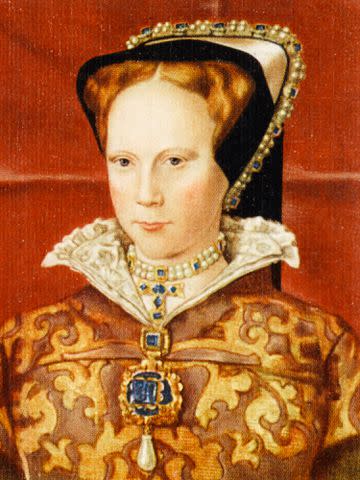
Queen Mary I is considered the first British monarch to become queen on her own — that is, not through marriage to a king. Born on Feb. 18, 1516, in Greenwich, England, to King Henry VIII and Catherine of Aragon, Mary was the only one of her siblings to survive past infancy. Mary is also known as Mary Tudor or Bloody Mary, a nickname she earned after sending hundreds of Protestants to their deaths.
Henry VIII, dissatisfied that Catherine of Aragon had not produced a male heir, eventually had his marriage to Catherine declared invalid. He went on to marry Anne Boleyn, and Mary was subsequently deemed illegitimate.
In 1544 however, the Third Succession Act restored both Mary and her younger half-sister Elizabeth I (born to Henry VIII and Boleyn) to the line of succession through their half-brother King Edward VI.
But, when Edward VI died in July 1553, he excluded both Mary I and Elizabeth I from the line of succession to ensure that Mary did not inherit the throne and restore Catholicism to the country. Still, Mary became queen after the nine-day reign of Lady Jane Grey and was officially crowned on Oct. 1, 1553.
While Mary wed King Philip of Spain, the couple never welcomed any children. She died in 1558 with her younger half-sister Elizabeth I as her successor.
Queen Elizabeth I
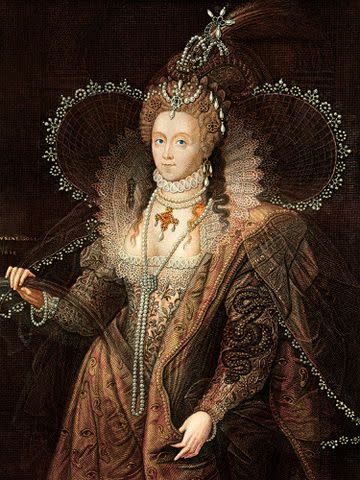
Queen Elizabeth I was born on Sept. 7, 1533, in Greenwich, England, to King Henry VIII and his second wife, Anne Boleyn. King Henry VIII later had Boleyn beheaded in 1536 after she was charged with adultery — though historians generally believe she was falsely accused.
A multilinguist, Elizabeth acceded to the throne following Queen Mary's death in 1558. According to the Royal Family's official website, Queen Elizabeth's reign is generally considered the "most glorious in English history."
She famously never married throughout her 45-year rule and instead declared herself married to her country, a move that many have observed as politically savvy.
"It was actually quite clever of her to announce that she was married to the country and therefore could not be married to someone else," actress Margot Robbie, who played Queen Elizabeth I in Mary Queen of Scots, told PEOPLE in 2018. "It was really the only way of protecting herself and protecting her position in that way. It really came from life and death stakes. In her mind, it was a survival technique."
As queen, Elizabeth brought back Protestantism as the state religion and restored many of her father's decrees and laws. She faced a number of threats to the throne, most notably from supporters of her cousin, Mary, Queen of Scots, also known as Mary Stuart. As another great-granddaughter of Henry VII, Mary Stuart was next in line to the throne following Henry VIII's children. With her own legitimacy questioned more than once, Elizabeth I's court could not afford to rest when it came to the threat posed by her cousin. In fact, Elizabeth I kept Mary Stuart captive in England to keep her from claiming the throne.
Ultimately, Mary, Queen of Scots, helped to plan the attempted assassination of Elizabeth I in the Babington Plot of 1956. Mary was tried, convicted and executed in February 1587.
The last Tudor monarch, Queen Elizabeth I died on March 24, 1603, of unknown causes. She was succeeded by Mary Stuart's son, King James I, previously known as James VI of Scotland.
Queen Mary II
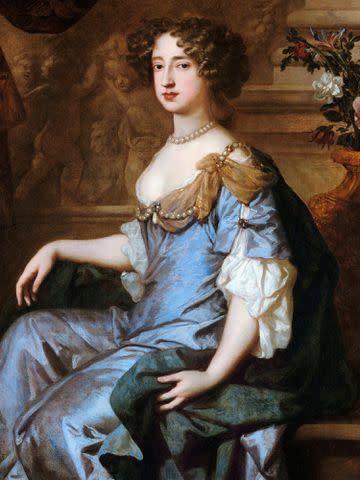
Queen Mary II was born on April 30, 1662, in London to King James II and his first wife, Anne Hyde.
Mary married her husband, William III of Orange, when she was 15 years old. The pair were initially matched due to their families' political motivations, but they grew to love each other, according to Historic Royal Palaces. When Mary was asked to become queen in 1689, she agreed only if her husband could rule alongside her as an equal. To date, they are the first and only couple in the British monarchy to rule jointly.
Mary II and William III were essentially co-monarchs; when William, an experienced military leader, was in the country, Mary followed her husband's lead, only exercising her rule when he was away. The World History Encyclopedia wrote that Mary II was popular for her willingness to conduct her rule in this way. When her husband was home, Mary focused her attention on hobbies such as gardening.
Per the University of Exeter, Mary had miscarriages in 1678 and 1679; she and William never had children.
Queen Mary II came down with smallpox in December 1694 and died before the year ended. William III remained king, but he never remarried and died heirless in 1702, paving the way for Mary II's sister Anne to take the throne.
Queen Anne
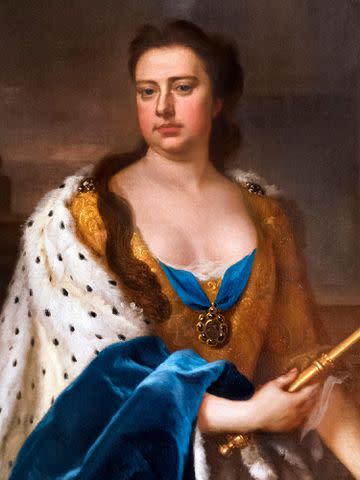
The younger sister of Mary II, Queen Anne was born on Feb. 6, 1665, in London to James II and Anne Hyde.
According to the Royal Family's official website, Anne married Prince George of Denmark when she was 18 years old. The pair attempted to have children — Anne was pregnant at least 18 times, each resulting in miscarriage, stillbirth or death during childhood. One son, William, Duke of Gloucester, died of what was likely a bacterial infection and pneumonia just days before his 11th birthday.
Much was made of Anne's close friendship with Sarah Churchill, the Duchess of Marlborough, and the two women were close friends long before Anne became queen. Their friendship inspired Yorgos Lanthimos' film The Favourite, which stars Olivia Colman as Queen Anne and Rachel Weisz as Churchill. The movie explored the possibility that Anne and Churchill were also lovers.
Author Anne Somerset told the BBC: "The question of whether Queen Anne was a lesbian is a very interesting one. If you read the letters she wrote to Sarah as a young woman they are passionate outpourings of devotion. You might immediately think perhaps they were having an affair."
Somerset continued, "But you also have to bear in mind that in that era women did have passionate friendships with no erotic undertones. I don't doubt that her marriage to Prince George was a happy and devoted one."
During her reign, Anne oversaw the union of Scotland and England as the Kingdom of Great Britain. The last years of Anne's life were plagued with tension between Scotland and England, and many in Scotland endured tough economic times.
The last Stuart monarch, Queen Anne died in 1714.
Queen Victoria
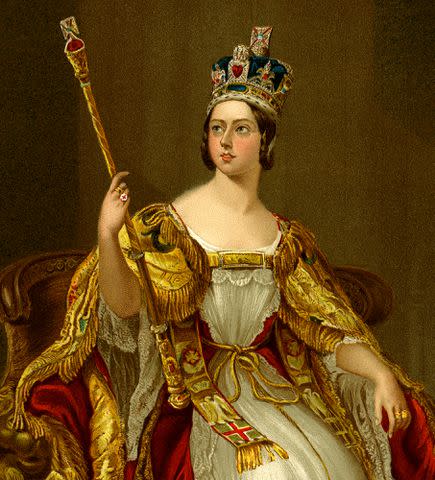
Queen Victoria was born on May 24, 1819, and was the only daughter of Edward, Duke of Kent, and Princess Victoria of Saxe-Coburg-Saalfeld. The future Queen Victoria was a granddaughter of King George III; she became heir to the throne after her father died, as her three uncles did not have children who survived to adulthood.
Victoria was barely 18 years old when she became queen in 1837. As historian Daisy Goodwin explained to PEOPLE in 2017, "That is a huge deal. After a succession of old men, they had a teenage woman running the country."
She married her husband, Prince Albert, three years later. According to Goodwin, the two had a full-blown love affair and connected because they had each lived through personal tragedy. "They had this real bond because they had both lost a parent — she was fatherless and Albert was motherless," Goodwin said. "He is an interesting character as, unlike most men of his generation, he was not fooling around. He fell for Victoria but never looked at another woman."
The two went on to have nine children together, all of whom survived into adulthood. Most of her children married into other European royal families.
According to Encyclopaedia Britannica, Victoria's reign coincided with a particularly successful time period for what had since become the United Kingdom of Great Britain and Ireland. The death of her husband in 1861 sent the queen into a depression, and she rarely left her home in the years that followed.
In 1887, Victoria gained a personal attendant named Abdul Karim, who was introduced to the queen when he was part of her Jubilee celebrations that year. Journalist and author Shrabani Basu has explained that despite the power dynamics at play, the two were genuinely close.
"It was friendship and real bonding," Basu said. "She was a lonely queen and being surrounded by the formalities of court, and suddenly here is this young Indian and he is informal and doesn't have these trappings. He is related to her as a human being." Karim taught her Urdu and became her "Munshi" — a Persian word for "writer" used in India to mean "teacher."
Basu added: "You could see the relationship growing. In [Victoria's] journals, there are mentions of seeing the Munshi's wife, or the Munshi's cat has had kittens. This is the Queen of England and she's just frequently visiting his house, [asking him], 'Will you come up and say goodnight to me?' All very personal things."
Victoria continued to travel as queen up until the year before her death. She died on Jan. 22, 1901, and was succeeded by her son Edward VII.
Queen Elizabeth II
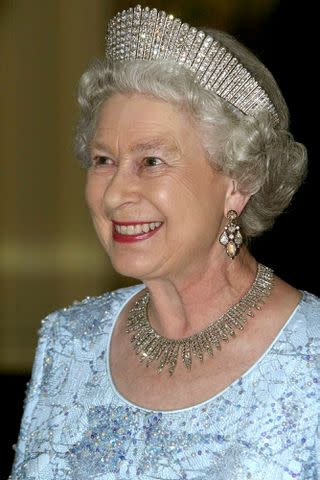
Queen Elizabeth II was born on April 21, 1926, in London. As the oldest daughter of then-Prince Albert, Duke of York, and Elizabeth, Duchess of York, Elizabeth was not expected to ascend to the throne. Albert was King George V's second son; Albert's elder brother, Edward VIII, succeeded the throne when their father George V died.
Things changed for Elizabeth and her family in 1936 when her uncle Edward VIII abdicated the throne so he could marry Wallis Simpson, a twice-divorced American socialite. Elizabeth's father became King George VI, and she became first in line to the throne.
Elizabeth met her future husband, Prince Philip, in November 1934 when she was 8 years old. The pair began exchanging letters in 1939, and they married in 1947. They welcomed four children together: King Charles III, Princess Anne, Prince Andrew and Prince Edward. Elizabeth received news that her father had died while she and Philip were in Kenya in 1952; overnight, she became queen.
She was a largely beloved figure, though the decades of her reign were marked by a shrinking of the British Empire, something that was welcomed by many.
"She was interested in people. That was the great unifying force. With all these prime ministers and leaders, she was able to relate to them as people," her former assistant private secretary Samantha Cohen explained. "Male leadership is often transactional, and female leadership is relational. She built relationships with people like [Nelson] Mandela and [Ronald] Reagan, and those relationships endured."
If there was one period in which the Queen's reputation wobbled with the public, it was in the days that followed the unexpected death of her former daughter-in-law Princess Diana, who was killed in a car crash in 1997. Elizabeth was blasted for not appearing in public shortly after the accident, but her grandson Prince William later praised his grandmother's decision to comfort him and Prince Harry during that time.
"She was by my side at my happiest moments," William said after her death. "And she was by my side during the saddest days of my life."
Queen Elizabeth died on Sept. 8, 2022, at the age of 96 as the longest-reigning British monarch in history. Following her death, her eldest son King Charles ascended to the throne.
For more People news, make sure to sign up for our newsletter!
Read the original article on People.

